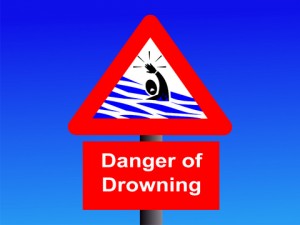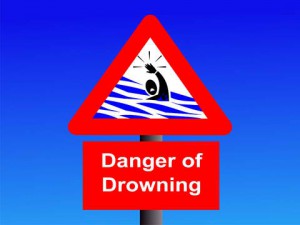By ARIEL C. SEBELLINO
 AFTER a near drowning experience in Puerto Galera in his early teenage life, Alvin Alcober made sure he learned how to swim.
AFTER a near drowning experience in Puerto Galera in his early teenage life, Alvin Alcober made sure he learned how to swim.
Alcober is now very careful about choosing places to swim, checking if they have facilities to secure swimmers.
In the Philippines, young boys like Alcober are common victims of drowning — the second leading cause of death among Filipino children aged 14 years and below.
“About eight persons die everyday due to drowning and that more were reported to be victims of near drowning (10 cases per day),” a Philippine report presented at the World Conference on Drowning Prevention (WCDP) 2011 said.
Children were found to be more prone to or at risk of drowning, according to Lita Orbillo of the Family Health Office, National Center for Disease Prevention and Control, Department of Health (DOH) who made the oral presentation.
Drowning has been ranked as the fourth leading cause of death from injury in the Philippines by a United Nations Children’s Fund (UNICEF) survey. The top five causes were road traffic accidents (20%), gun shots (17%), stabbings (14%), drowning (12%), and electrocution and falls (4% each).
The alarming number of maritime disasters in the country has contributed to drowning statistics since the Philippines is an archipelagic country consisting of more than 7,000 islands. Ten of the 22 incidents from 1980 to 2003 were identified as major maritime disasters in the Philippines which resulted to at least 3543 casualties, or an average of 10.5% of deaths from drowning for all ages.
“Moreover, the country is often visited by typhoons (average of 20-25 annually) causing floods, flooded areas, flash floods and turbulent seas which undeniably cost the lives of Filipinos,” the Philippine report to the WCDP 2011 said.
The report, titled “Development of the Philippines National Framework of Action on Drowning Prevention 2011-2015,” was prepared by Orbillo, Dr. Juanita Basilio Dr. Manuel Calonge.
Drowning incidence in the Philippines, though said to be lowest in Asia, has prompted the DOH “to develop the draft National Framework of Action on Drowning Prevention as the first major step in the fulfillment of its commitment to eliminate drowning as a crucial concern of the country.”
The draft national framework, which is still under policy review, aims to reduce the risk of drowning and near-drowning among high risk groups, more particularly children, as a result of aquatic activities such as fishing, recreational swimming, boating – and natural calamities like floods, tsunami and flashfloods.
The settings may also include open seas, coasts, rivers, lakes, dams, public and private swimming pools. Lingayen in Pangasinan and Infanta in Quezon are considered drown-prone areas.
“The development of the framework for drowning prevention is a major step undertaken by the Philippines Department of Health in response to the growing concern on drowning problem,” the Philippine report said. “With strategies outlined in this policy directive, it is hoped that drowning incidents in the country will be lessened.”
The health department defines drowning as the process resulting in primary respiratory impairment from submersion or immersion in liquid medium that may or may not result in death.
To avoid drowning, the DOH recommended close child supervision, wearing of flotation devices, participation in water safety awareness activities and training programs on first aid, basic life support and basic survival swimming for both child and adult.
Data collected by the Department’s National Epidemiology Center from the UNICEF’s Philippine National Injury Survey (PNIS) in 2003 showed there were 2,822 cases of deaths caused by drowning injuries. More than one-third (35.6%) were children below 14 years old.
A later study by the World Report on Child Injury Prevention of 2008 showed that 175,000 children and youth less than 20 years of age around the world died of drowning in 2004. Ninety-eight percent of deaths occurred in low-income and middle-income countries.
The PNIS data also found that drowning rates were highest among boys and girls less than 5 years old compared to other age groups and higher among females than males for all age groups.
It said that drowning rates were higher among males under 5 years and among those under 15 years compared to females of the same ages. This gender difference is largest for male toddlers whose relative risk for drowning death is 1.5 times higher than female toddlers.
